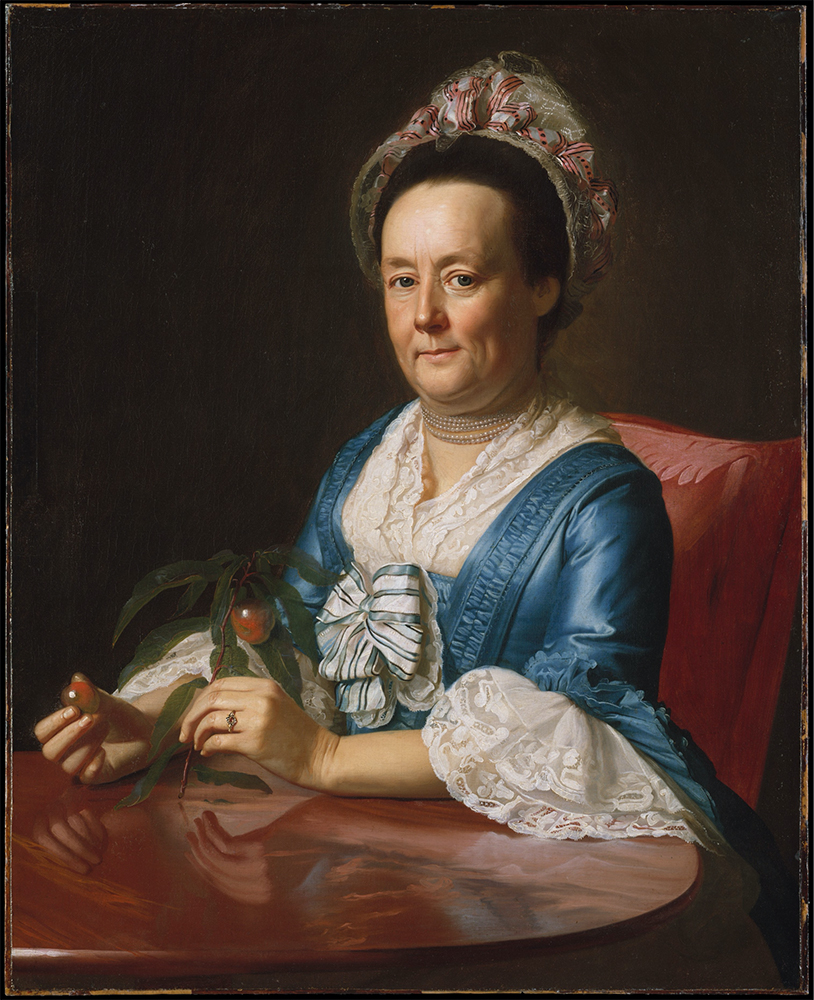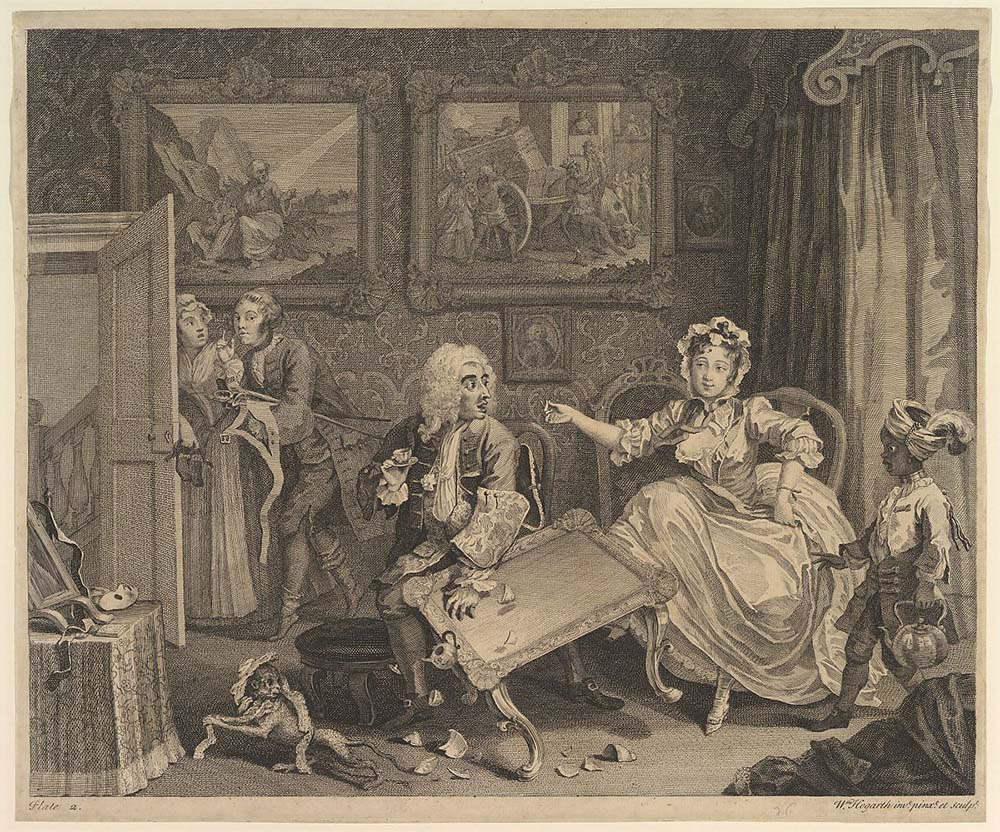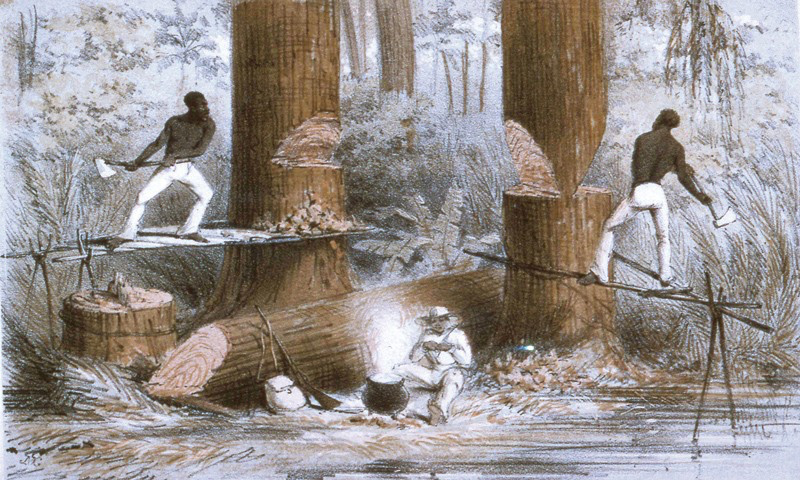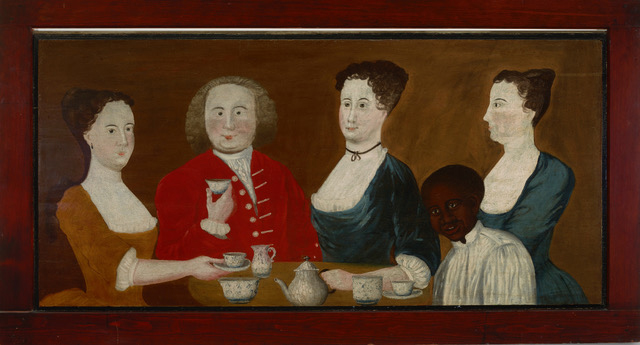

John Singleton Copley,
MRS. JOHN WINTHROP/HANNA
FAYERWEATHER, 1773,
oil on canvas; Metropolitan Museum of Art.

John Singleton Copley,
MRS. JOHN WINTHROP/HANNAH
FAYERWEATHER
oil on canvas; Metropolitan Museum of Art.
The shiny mahogany table in John Singleton Copley's portrait of Hannah Fayerweather (1727-1790) literally reflects her monetary worth. Wealthy sitters gratified their own egos by making their affluence unmistakably evident in these portraits, which would have hung in their home for all—white visitors and Black servants alike—to see.

William Hogarth,
A HARLOT'S PROGRESS, PLATE 2, BEFORE 1732,
etching and engraving; Metropolitan Museum of Art.

William Hogarth
A HARLOT'S PROGRESS
PLATE 2, BEFORE 1732,
etching and engraving; Metropolitan Museum of Art.
In this satirical image meant to depict the degeneracy of 1700s England, Hogarth's character Moll Hackabout distracts her wealthy lover while a maid sneaks Moll's younger lover out the door. Included in this image is a young, West Indian boy, dressed in exotic Turkish costume and holding a tea kettle used to fill the teapot seen falling to the floor. The chaotic effect of the overturned mahogany tea table at the center of the image is a metaphor for the moral depravity of British society made wealthy through slavery and colonization.

J. McGahey,
FELLING MAHOGANY, CA. 1850,
lithograph; American Antiquarian Society.

J. McGahey,
FELLING MAHOGANY, CA. 1850,
lithograph; American Antiquarian Society.
In this lithograph, two enslaved workers chop down old growth mahogany trees with felling axes, while a third figure sits by a boiling, cast iron cauldron.

JOHN POTTER AND FAMILY, CA. 1740
oil on wood; Newport Historical Society.

JOHN POTTER AND FAMILY, CA. 1740,
oil on wood; Newport Historical Society.
This portrait depicts the family of John Potter (1716-1787), a wealthy South Kensington planter and enslaver. The Potters drink tea, while the Black figure is foregrounded in the scene and engages directly with the viewer. This pictorial strategy heightens the sense of him being a displaced individual in this affluent household.

